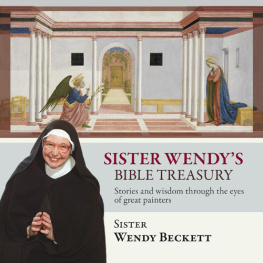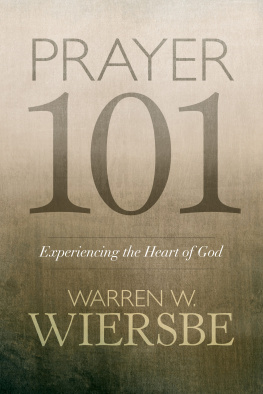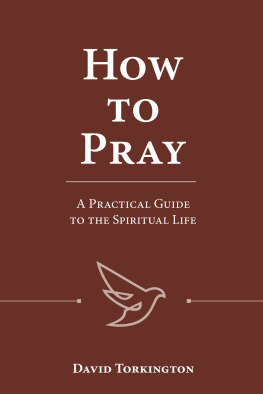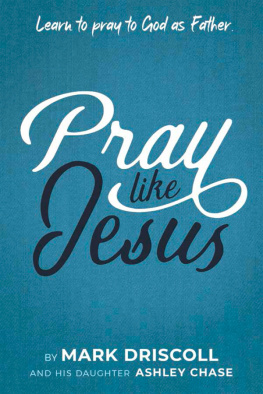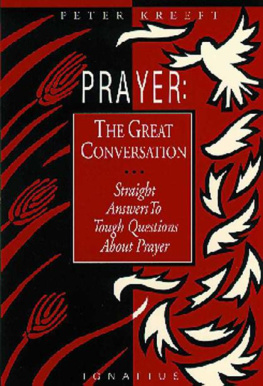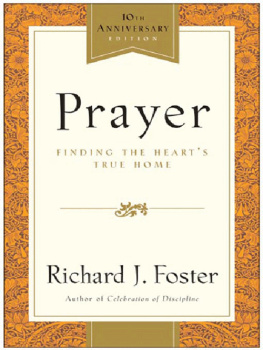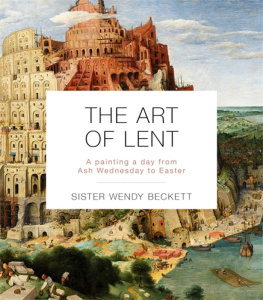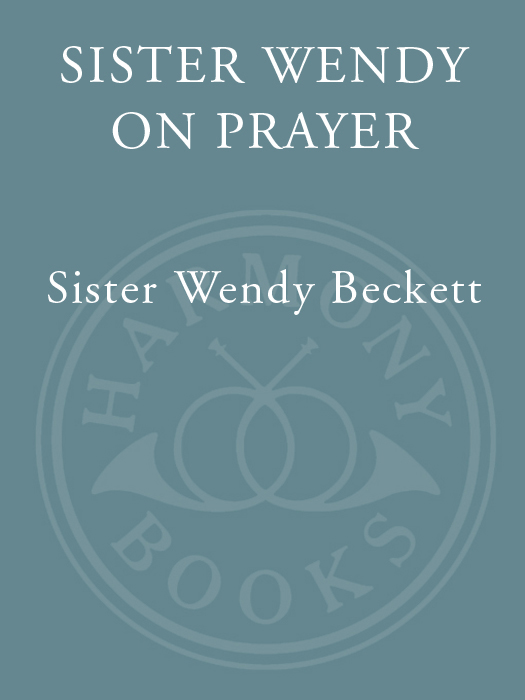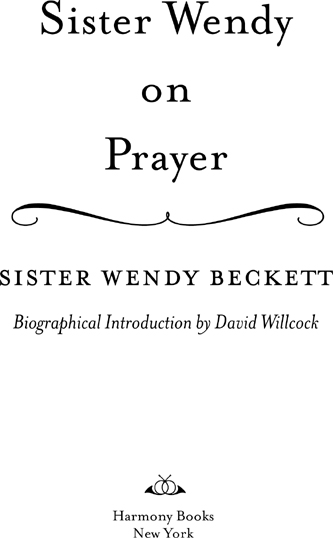Introduction
I always like writing about art. Quite apart from the beauty of the pictures, which can distract you from any inadequacies on the part of the text, we are really dealing only with opinions. I am telling you that this is what I think. What do you think? If you take another look at any work of arta long lookand find you disagree with me, I am only too pleased.
Writing about prayer is very different. These are not just my personal opinions, these are my convictions about what is deepest in our lives, most integral to being human: our relationship with God. What I write here, in however faltering a fashion, I feel to be so true that (forgive the melodrama) I would be prepared to die for it.
I am very well aware that what I write about prayer is not to everyones liking. There seems to be a universal certainty that there is some secret about prayer that can be taught. People feel sure that they would be prepared to go to a great deal of trouble and experience considerable difficulties if that was the way to uncover this mysterious secret. But prayer is essentially simple.
I cannot but recall the biblical story of Naaman the leper. You will remember that he came from Syria to be healed by the prophet Elisha. Naaman had clear expectations about how the miracle would happen. Elisha would come out to meet him, there would be blessings and ceremonial prayers, incense. He was completely disconcerted and very much annoyed when all his expectations were confounded. Elisha merely sent him a message telling him to bathe seven times in the Jordan. He was all for packing up and returning to Syria (far better rivers there too), when the persuasions of his servants, who obviously liked him, encouraged him to do as the prophet had said. Reluctant and disgruntled, Naaman took off his clothes as he would for any bath, and waded seven times into the river. When he came out, his leprosy had disappeared (2 Kings 5:114).
The point of the story is that he very nearly missed his miracle because the instructions were so simple. Evidently we do not like simplicityno room there for excuse. Furthermore, he had to do it himself. Elisha did not come out and pass on the magic secret. It was all up to Naaman, a responsibility which he was as unwilling to incur as any of us are. It seems to me that we have here a good parallel with our attitude to prayer and our difficulty in accepting the nakedness of its simplicity.
The irony is that when Naaman accepted that no one could help him, that he alone must go down into the water, his bit was done. It was neither Naaman nor Elisha who worked the miracle. It was God. When we accept that no one can help us, that we alone must stand there in prayer, our responsibility ends. It is not we who pray, it is God. Prayer is His business. I was going to say from start to finish, but obviously the starting must be our own choice, our own decision. We have to will to let God take possession and stay in that will whatever happens or, more likely, does not happen. Nothing happened to Naaman in the Jordan. He had to persevere with his seven dips, and only then, as he came out, did his leprosy fall away from him.
If we want it enough, we can live permanently in those sanctifying waters. But at the beginning it will be enough to go in and come out and always be ready to return. As we know from the Gospels, Jesus regards seven as a rather elastic figure (I do not say to you seven times, but seventy times seven, Matthew 18:21).
I have found this book very difficult to write. This is partly because I myself have been so exceptionally fortunate, being privileged to live in solitude and spend many hours a day in pure prayer. I have been tempted to think that my privilege invalidates anything I say. But surely this cannot be so. Prayer is for all of us. No one is fully human who has not some sort of relationship with God, even an anonymous relationship. A sense of the mystery in which we live (why are we here? who are we? what is the meaning of being me rather than you?) is integral to the human consciousness, and it is to that awareness that I would give the name of prayer. It may be rudimentary, but it may also be the only kind of prayer of which an individual is capable, the only way God can come to that person.
For those who have experienced even the most fleeting moments of this contact with God, as well as for those who wish to make or have made a profound lifelong surrender to Him in prayer, I think what I have written here holds good. It may be frighteningin fact, I know it is. But fear must never keep us back from allowing God to draw us into fulfillment.
Biographical Introduction
BY DAVID WILLCOCK
In Saint Johns Gospel, Jesus exhorts his disciples to be in the world, but not of it. Surely nothing acts as a better summary or description of the career of Sister Wendy Beckett.
Sister Wendy has led not one but two extraordinary lives. She entered a convent sixty years ago at the age of sixteen. And for the last thirty-five years, she has lived the austere life of a hermit, gladly undergoing the sort of solitary confinement that has been used to break hardened criminals and political detainees. But then another vocation has been superimposed onto this monastic rigor: that of a television art critic.
In 1991, Sister Wendy, the art nun, was thrust into the limelight. She offered in her television programs a spiritual resource for a largely secular society. And offscreen, to those she met along the way, she offered refreshingly uncomplicated and sometimes unconventional spirituality that was a source of fascination and inspiration. Resolutely agnostic producers, world-weary crews and hard-bitten press men could all be found, once the cameras were wrapped, pressing for answers to deeply felt questions about life, God, prayer and religion. This intense interest was further echoed by passersby and viewers.
As Sister Wendy has indicated above, she sees prayer as terrifyingly simple and deeply personal. There are no tricks, no tips, no secret shortcuts: prayer is a matter between God and the believer. That conviction, combined with her unique lifestyle, has always led her to maintain stoutly that her views on prayer would be of no interest to, or would have no application for, anyone else. It is only the evident interest and repeated questions of others that have persuaded her to break silence on this most intimate subject.


